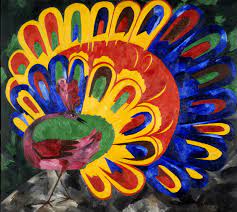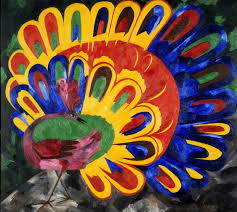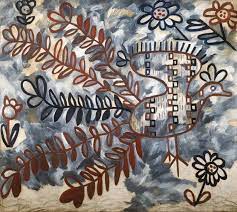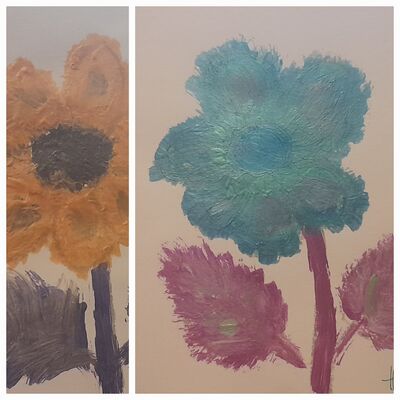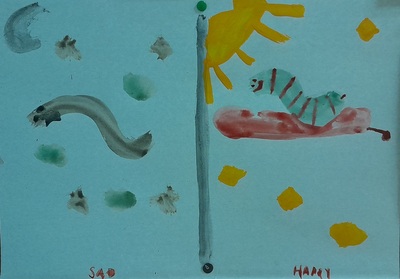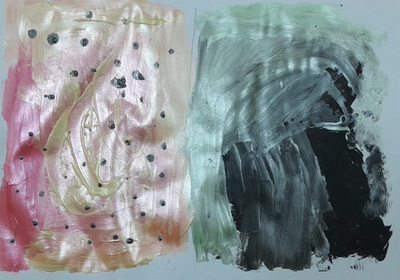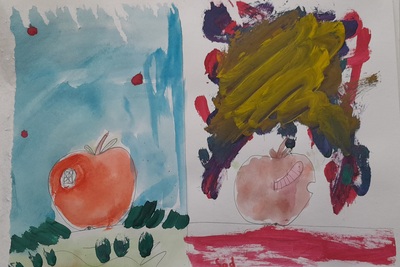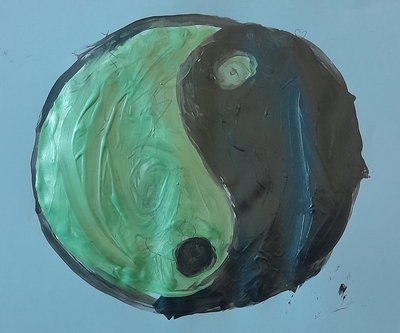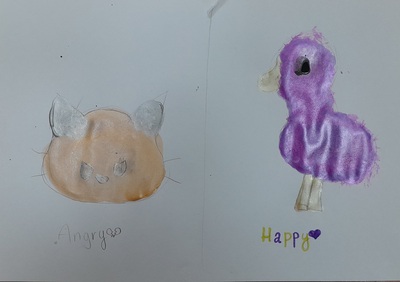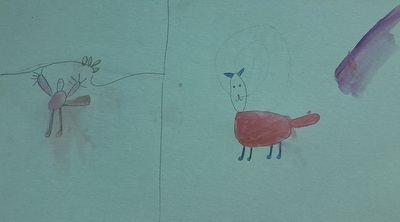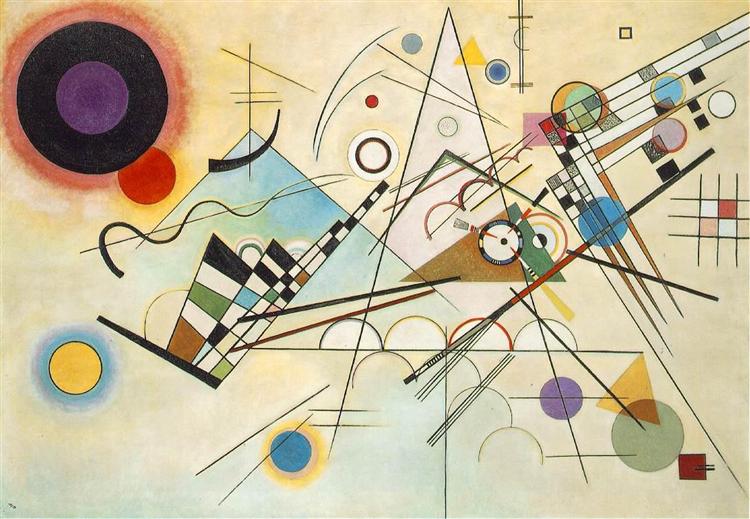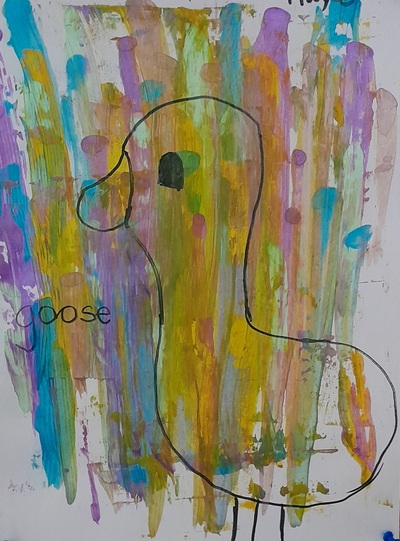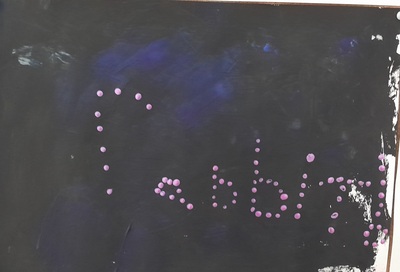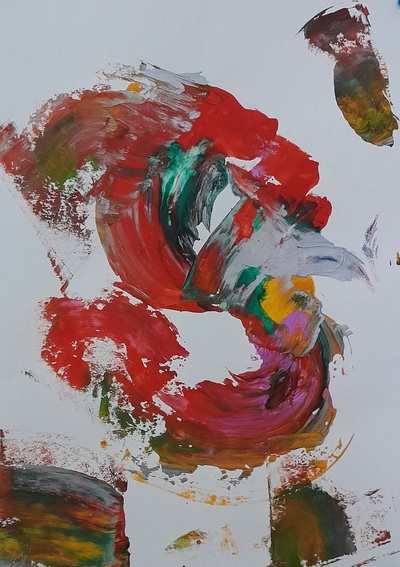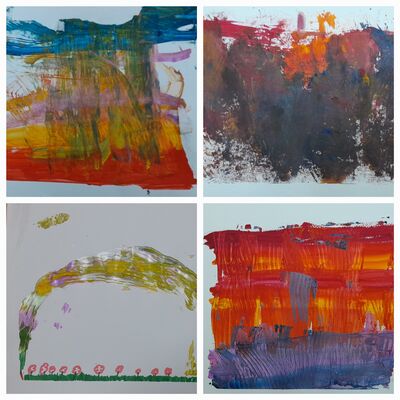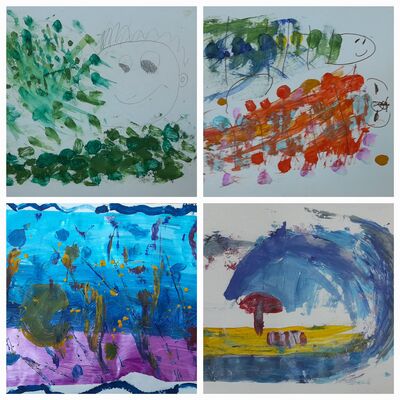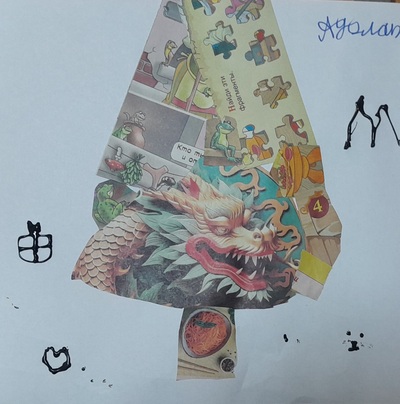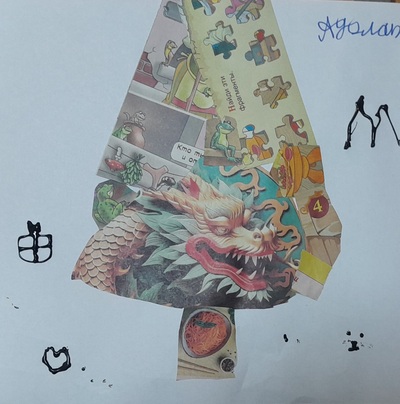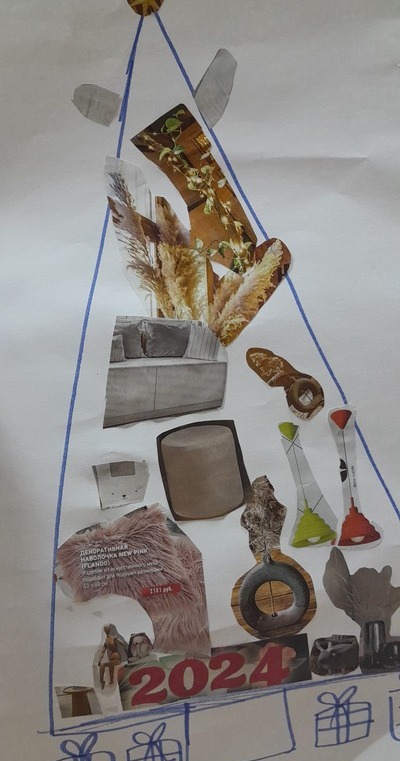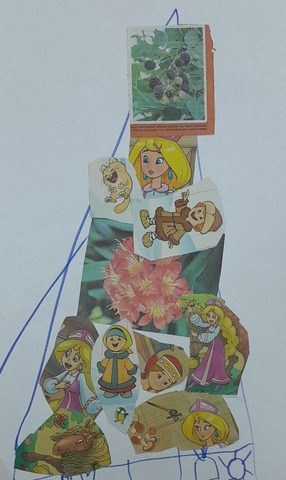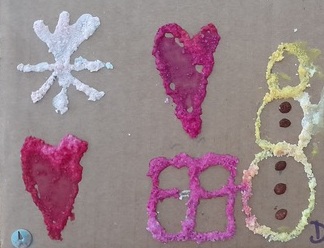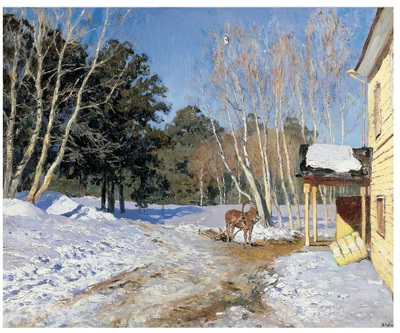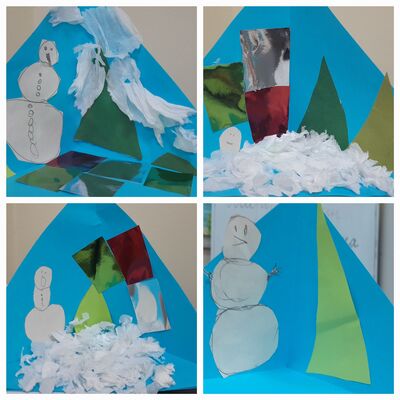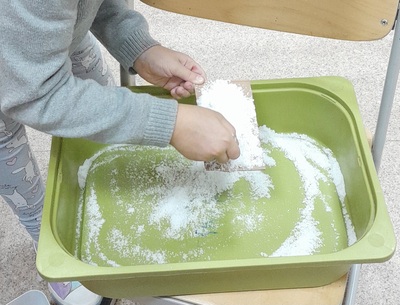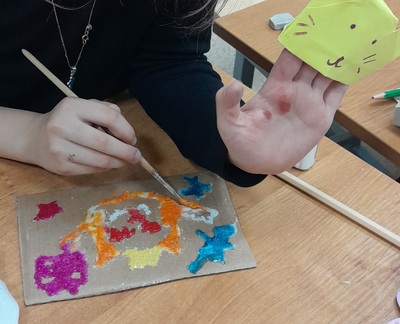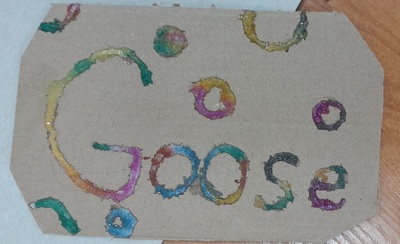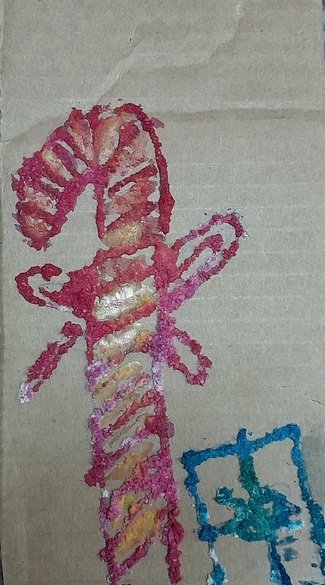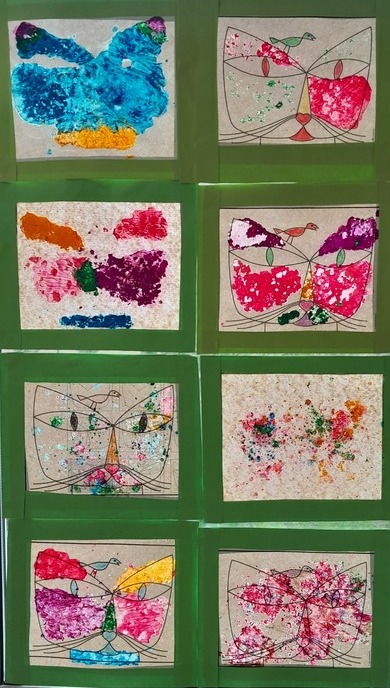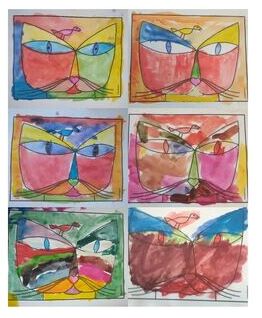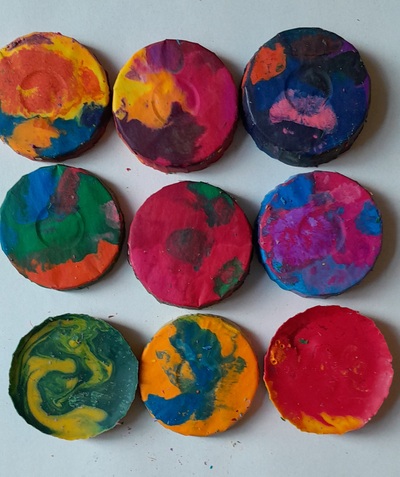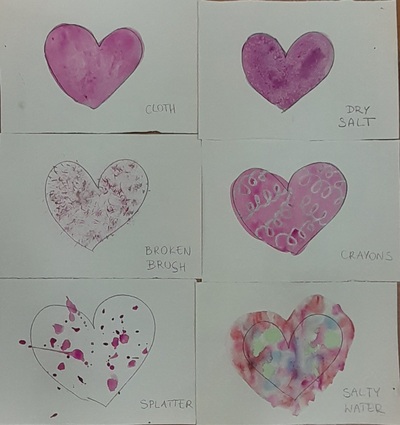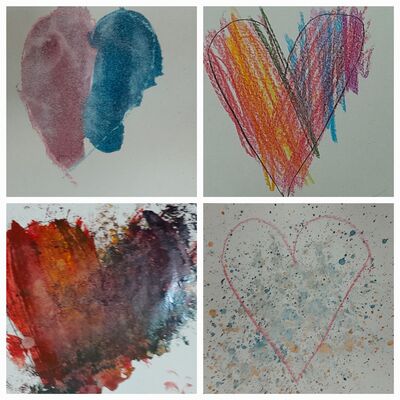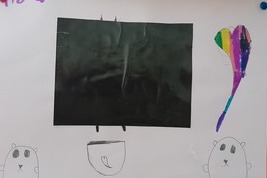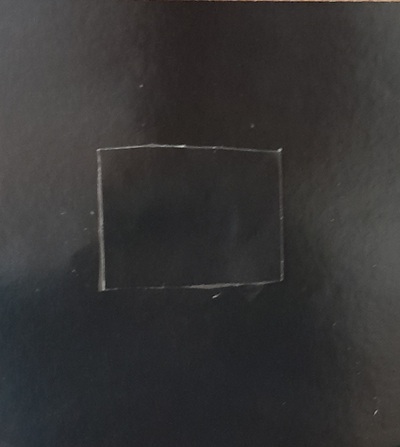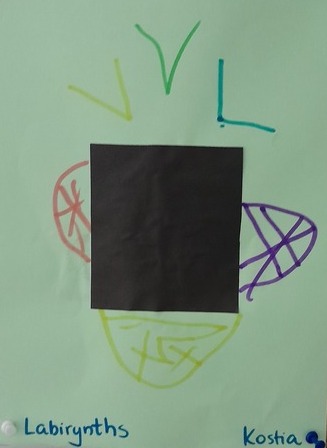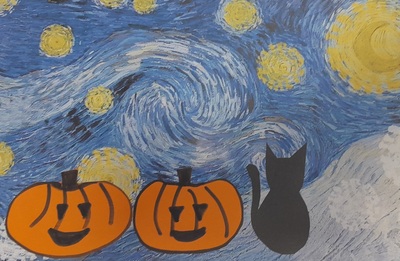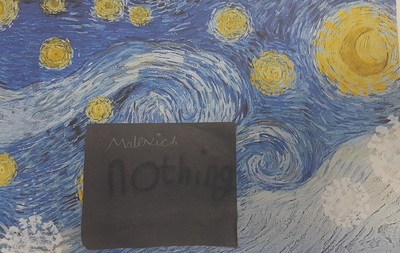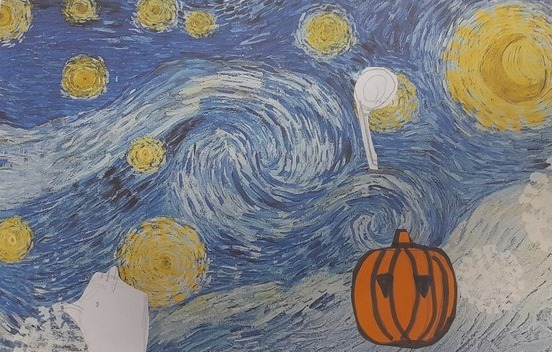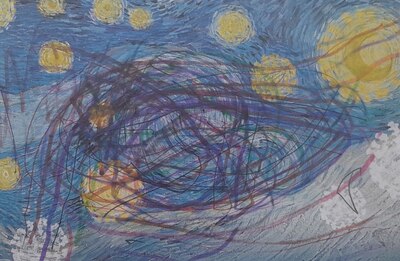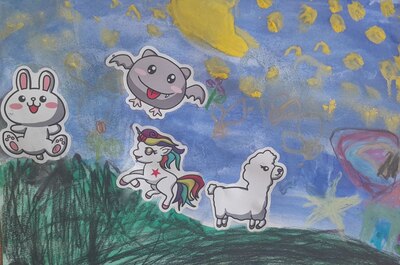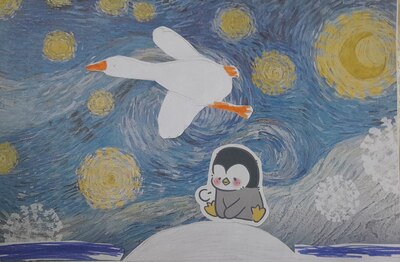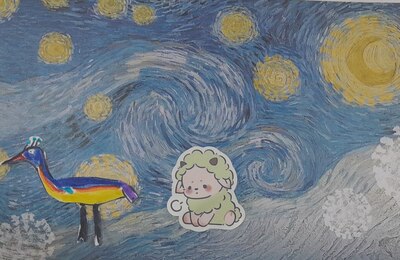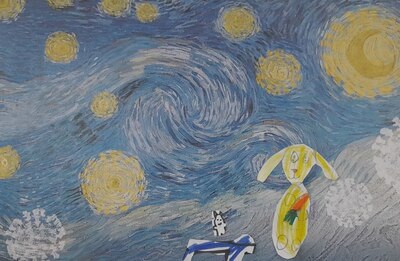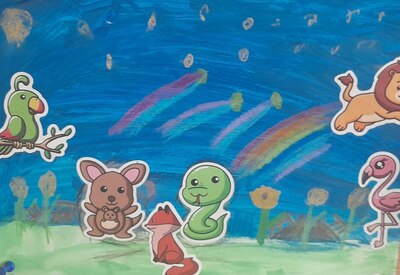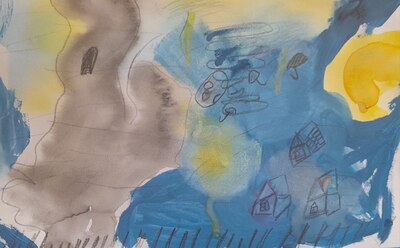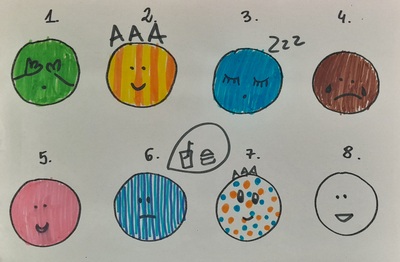
The language
We continue to work on expressing our opinions and on justifying them. Since the Unusual Colours was a huge success with both groups, I decided to continue with a different set of visuals. We revised all the basic structures to express opinions, we looked at all the pictures in the set with the group and we said what we thought of them and why. As usual, it was great to see the growing confidence and the courage to express your preferences even if they are different from your friend’s or the group.
This time round I went more slowly, pausing after each picture, to share ideas. I was also trying to encourage the kids to produce a little bit more than just ‘I like it’ or ‘I don’t like it’, with questions such as ‘Why?’, ‘How does it make you feel about it?’, ‘What are you thinking about?’ etc.

The artist
Beginning October, my Art classes have been divided into two groups, the younger (pre-school and year 1) and the older (year 2 -4) and the decision to do so was a real game changer because I can adapt the level of the language and the Art input sessions to the age and the language level of the students. Each group has only one lesson a week but they are more meaningful, more focued and more child-friendly.
Because of the holidays and the calendar, the lesson with the older kids comes up first right now and it is also very important and handy. I can prepare for the more group with more advanced language skills, motor skills and with more life expience and do what I really want to do and then just adapt to what my younger kids are able to do. I really like it this way.
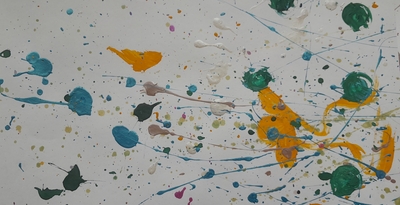
In our Jackson Pollock lesson, I introduced the artist of the day (name, country, favourite things) and the fact that he is, most likely, the most renowned modern artist today or, at least, the painter that most people associate with modern art.
Later on, we looked at five of his paintings, in different colours, with different titles, from ‘real’ names (‘Summer’) through ‘Number 5’, to the beautiful ‘Untitled’ and we talked about what we think about them and how they make us feel. In the end, we watched a clip from the video ‘How to paint like Jackson Pollock’ to show the students the real process. I also decided to include a short slot devoted to the main characteristics and I called it ‘What Jackson Pollock would tell us’.
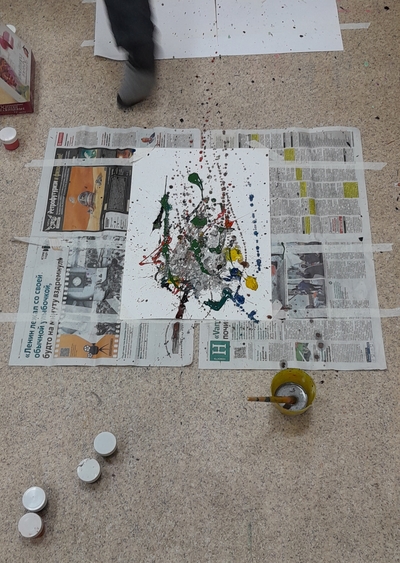
The art
Well, this has to be the first thing to say out loud: Jackson Pollock is a serious logicstical challenge for an Art teacher. Especially if this Art teacher works with young kids and in a room that is a regular classroom which lends its square meters to all the creative activities and then goes back again to being ‘just a classroom’, used and shared with other students and teachers. To be prefectly honest, I am not sure I am entirely happy with how I dealt with it.
Things that need to be taken into consideration are as follows: the technique is a mess-generating one and it requires serious preparations. It is supposed to be done on the floor (which is refreshing and exciting) and the floor needs to be protected. So do the walls, the desks, the chairs and the kids’ clothes, because, surprise surprise, the paint spatter is a powerful force and you will find it in the most unexpected places.
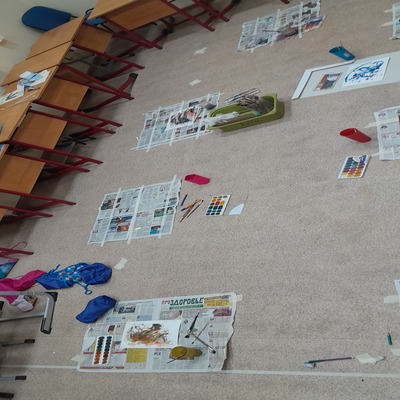
The classroom was almost completely reorganised – the tables and the chairs were put aside, to make room on the floor. I perpared the working station for each of my students (an A3 piece of cardboard, on a much larger piece of newspaper, scotched to the floor) as well as the station with all the paints, brushes, water and tissues. Apart from that we had a semi-circle of chairs in front of the TV where we were to sit during the first, theoretical part of the lesson. We spent here around 20 minutes and later on, we moved to our work stations, to create.

The task was really simple – choose your favourite colours, think what idea you want to convey, take the water and the paints and start creating and experimenting with the technique. This part was great. The kids were trying out different hand movements, they were also observing each other and sharing ideas and opinions. The creativity was slow and a bit inhibited at the beginning but, as we moved on, the kids really got into it. Things were coming together. In the end, we talked about the possible titles for our paintings and how we felt during the entire process. This part was amazing. The paintings were left on shelves to dry overnight and some of my students came on the following day to pick up theirs and to take them home. They did enjoy and they did treasure their creations. Aims – met.
However, I have to admit – these preparations were not enough. The stations were too close to each other, the pieces protecting the floor were too small and, overall, the students’ clothes were not protected. We talked about being careful and respecting the other artists’ space, but I could have done better but mostly because I was lucky, with my older group of only seven students. I am to do the same lesson on Monday, with the younger group and I am working on adapting the ideas and the set-up or, also, entirely giving up on Jackson. I will also be adapting the number of resources used, giving up on the acrylic paints and the guache, because only the watercolours are relatively easy to wash and to clean.
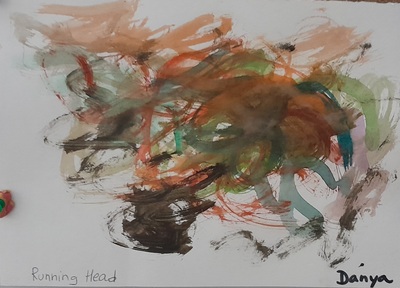
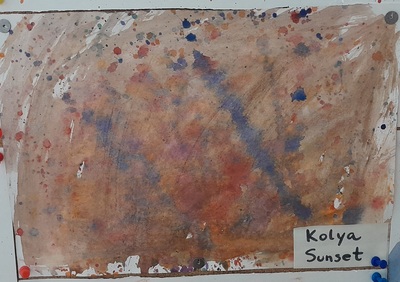
The Pollock lesson – round two. Pre-K and year 1
There were a few things that I had to change for the lesson with the younger kids.
- I took over a much bigger space on the floor, with the smaller pieces of cardboard (A4) on much bigger pieces of newspapers and with much bigger distance between them. I also marked the place on the floor where the kids were supposed to be sitting, to ensure that they are not facing each other but sitting back to back to minimise the paint spatter.
- I also gave out the painting aprons that we apparently had at the school. However, I had my plan B – bin liners with holes for arms and head.
- I was more selective as regards the types of paints, limiting them to watercolours only. Watercolours lend themselves to splashing and spattering, too if more water is added. Acrylic and guache paints are more thicker and more difficult to wash. What is more, a box of watercolours is a box of watercolours, with each child working on their own, at their station, without the need to get up, walk around and exchange jars with friends. Hence – fewer opportunities for stepping into splashes and dirty footprints around the room.
- I am happy to say that it all worked very well!
- Apart from that, I have to say that, somehow, my little students were somehow more open-minded and ready to dive into the modern art world. They were eager to discuss what they could see in the paintings I showed them and I really could not calm them down here. They wanted to talk and talk, although, because of their level of language, they could do it in English and in L1. They were also very eager to come up with titles for their own creations. These were really artistic discussions. I was really proud of them and some of these paintings are just precious!
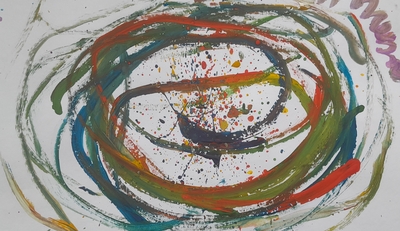
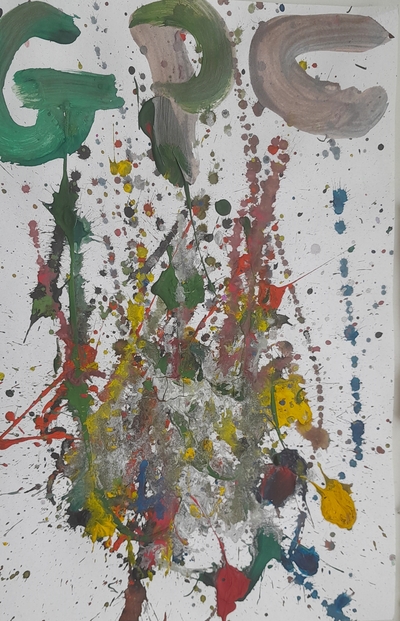
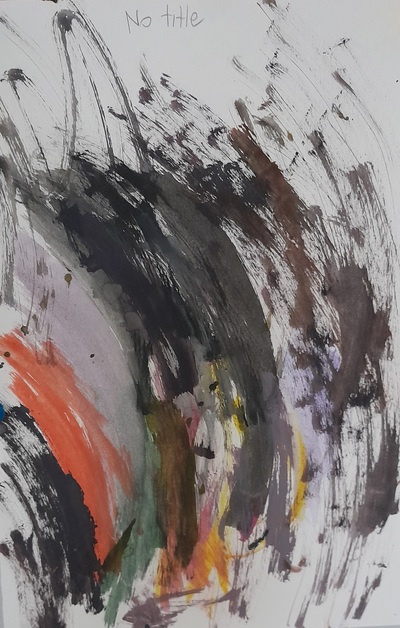
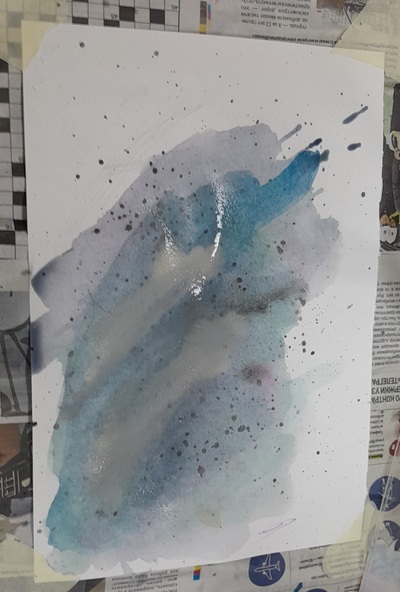
Happy teaching!
